After 3.5 months in Guatemala, spanning mid-June of 2014 to early October, it was finally time for me to leave my beloved city of Xela (aka Quetzaltenango) and to leave Guatemala as a whole. Yeah, going somewhere new is great, but I was still pretty miserable about the whole thing.
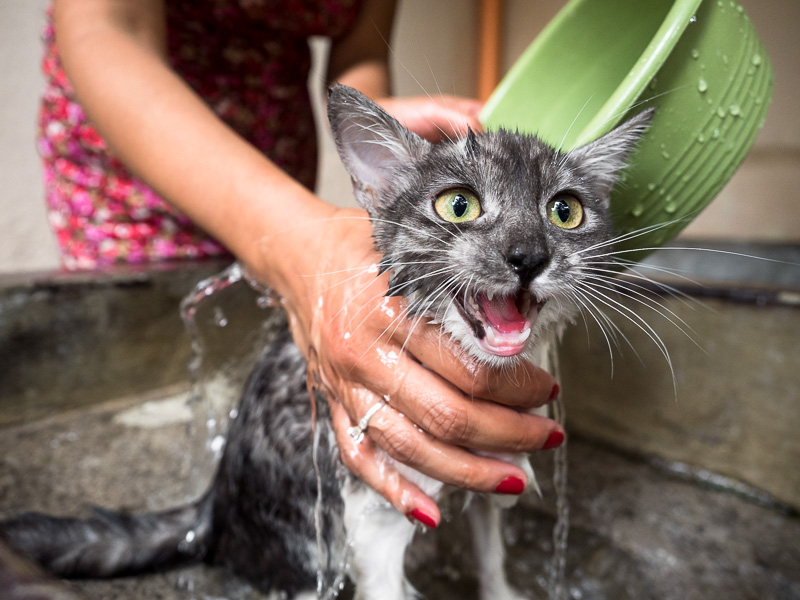
This is hostel cat Lula’s first bath in the cold water of the pila at Casa Seibel, where I stayed/lived for two months. I got a bit attached.
My next stop would be Honduras, starting at the city of Copán Ruinas. This is the border at which most travelers cross between Guatemala and Honduras.
“BUT HONDURAS IS DANGEROUS!” THEY SAID.
Honduras was awarded the title of “most dangerous country in the world” in recent years due to chart-topping murder rates, largely due to gang and drug violence – recent stats state that in Honduras, between 75-85 people out of each 100,000 are murdered. Ow. The Honduran city of San Pedro Sula (pop. 437,798) is, as of late, known as the “world’s most dangerous city”, and the capital, Tegucigalpa, doesn’t have a considerably better reputation. How nice. Accordingly, the US State Department has a current travel advisory on Honduras, updated as of June 24, 2014. Great.
For all this, Honduras maintains a pretty nasty image problem, and travelers aren’t oblivious. Many backpackers/travelers I met in Guatemala were wary of entering Honduras at all, despite unique attractions like the Mayan ruins of Copán, and the popular Bay Islands, located in the Caribbean, on the north side of Honduras (not to mention the different food, different culture, etc etc etc).
The fear is big for a lot of people, and there’s a lot of resultant fear-mongering BETWEEN travelers about travel in Honduras – but most of the people that talk the loudest HAVEN’T YET BEEN TO HONDURAS!
With that said – hey travelers (and everyone else, for that matter) – if you haven’t been to a place and have no real experience with it, stop talking trash on it. It’s a ridiculous thing to do!
LISTEN. YOU CAN SKIP HONDURAS IF YOU WANT.
On a given Central American trip, you can just SKIP Honduras altogether if you want. There are basically two ways to do it (and I’m going to just “SKIP” El Salvador as well in the below, just to make things easier to understand):
Method #1: Fly over Honduras on a one-way ticket, maybe from Guatemala City to Managua, Nicaragua – for what will probably be (at minimum) a couple hundred dollars.
Method #2: Take a lengthy van or bus ride from Antigua (or Guatemala City), Guatemala all the way to Leon (or Managua), Nicaragua (or vice versa). I mean, like one BRUTALLY full day of transit, or two days of considerable transit. Also not fun and not free either, but cheaper than the flight. You can do this by tourist shuttle van, or by private bus companies like Ticabus.
I didn’t want to skip Honduras. There it was, in the middle of the Central American map, and I wanted to check it out (US State Department travel advisories be damned!). So off I went, from Antigua to Copán.
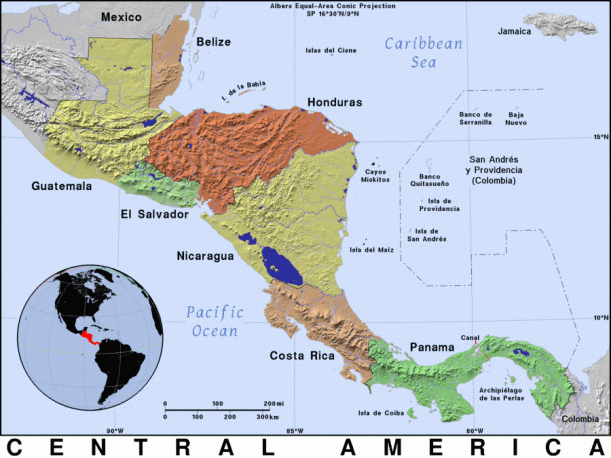
In truth, you can’t pass from Guatemala nor El Salvador onward, overland to Nicaragua without crossing through at least a patch of Honduras.
HOW MOST PEOPLE TRAVEL FROM ANTIGUA, GUATEMALA TO COPÁN RUINAS, HONDURAS:
The common routine for transit from Antigua, Guatemala to Copán (for most travelers) is to take a tourist shuttle van, departing from Antigua. It picks you up at your hotel at around 4:00 AM and terminates in the town of Copán Ruinas around 10:00 AM, and costs between Q150-200 ($20-25 US).

The likely road-route from Antigua to Copán Ruinas. Approx 280 kilometers.
Alternatively (and for potentially slightly less cash) you can travel from Guatemala City to the border by booking a ticket on larger private buses – but to be fair, Guatemala City is notoriously inconvenient for bus connections – each private bus operator has their own station in different parts of the city, so it’s impossible to check fares and departure times in person, in a centralized location. Plus, moving from one station to another requires use of taxis, which can get pricey fast for budget travelers. Expect something like $5-7 US for zona-to-zona cab rides there. Cab costs can instantly ruin the potential savings of traveling from Guate instead of Antigua. So there’s that.
Accordingly, I opted for the shuttle-from-Antigua method – and of COURSE it didn’t work.
MY EXPERIENCE IN ANTIGUA
After bussing from Xela to Antigua on October 7th, 2014 (Q35 on a chicken bus), I talked to about ten different Antigua-based travel bookers, requesting a ticket for the 4:00 AM shuttle the next day. Of the two transport companies that offer this route, one had a full shuttle, and the other had canceled the route for October 8th due to lack of volume/interest in the ride.
Should I have booked ahead? Maybe. But I hadn’t, and there I was, in low tourist season, with limited transport availability.
Antigua-based travel agency Onvisa was the only travel agency that gave me a response other than “you can go in two days from now”. They proposed a next-day (October 8th) 12:30 PM departure from my Antigua hostel via shuttle van, for a connection to an *actual* bus in Guatemala City (as in, something nicer than a chicken bus) which would take me as far as the Guatemalan border at El Florido. This, for Q175.
Note: Q150 fares via shuttle were available in Antigua, and I probably should have negotiated for this price through Onvisa for this work-around – but at the time I was just happy to be leaving Antigua on the correct day, so I didn’t bother.
Also part of Onvisa’s proposal: from the border, I would have to arrange my own transport from the Honduran side into Copán. My travel booker expressed no concern regarding this last step – he thought it would work fine, take only about 15 minutes, and only cost me around $2 US to get there (oh, if only it had.).
I wanted to get the hell out of Antigua (I personally think Antigua is quite a boring place, contrary to the opinions of many others), and on with my trip, so I handed over my Q175 to the booker and steeled myself for the (inevitably inconvenient) ride to Honduras the next day.
THE ROUTE, IN EXECUTION
12:30 PM, October 8th, 2014:
So it began. My initial shuttle van arrived at my hostel about 10 minutes late and scooped me up. The van was full of other backpackers, all heading to Guatemala City’s airport for flights home or onward to other international destinations (nobody here would be doing the border run with me). Midday transit from Antigua to Guatemala City took about 45 minutes, which is normal.
1:15 PM
Upon arrival in Guate, we dropped passengers off at different hotels as well as directly to Guatemala City’s airport. I was last off the bus at my proprietary bus terminal (the bus company was Litegua) for onward transit to the border.
2:15 PM
My bus was scheduled to depart at 2:45 PM, so I grabbed a quick, basic lunch from a nearby street food vendor. Q20 (just under $3 US) for chicken, rice, beans, tortillas and a Coca Cola.
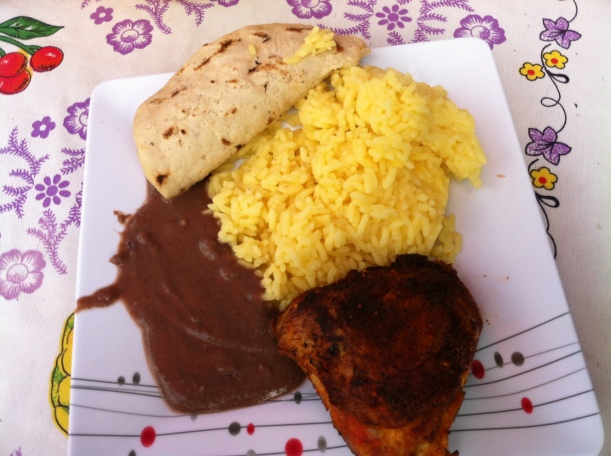
last meal in Guatemala.
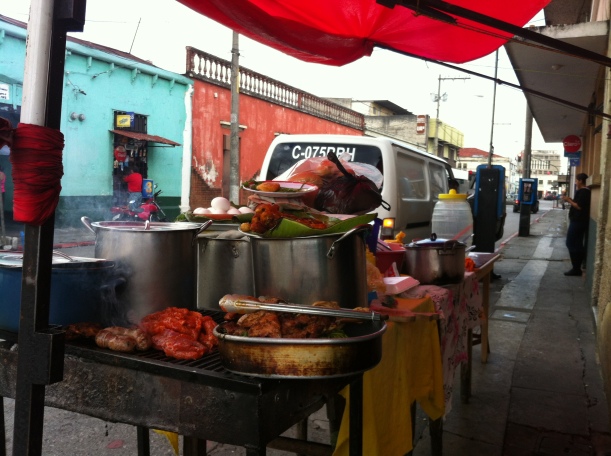
where it was made.
2:45 PM
We rolled out of the terminal right on time, with half the seats in the bus empty. I hoped to arrive at the border around six hours later, close to 8:45 PM. I was also hoping that both the Guatemalan and Honduran border offices would be open – I still wasn’t sure if this border crossing was (officially) possible 24 hours a day, and certainly didn’t want to have to crash in some horrible border town when Copán was just 15 minutes away on the other side. Uhhh.
The bus was a REAL BUS with bucket seats and a TV which screened a Vin Diesel family comedy dubbed in Spanish, in which ol’ Vin balances his life as some sort of secret agent assassin-type with home life in the suburbs, or something! HILAROUS! The bus driver listened to bachata so loudly on his phone that I couldn’t hear the dialogue of the movie anyway. No huge loss.
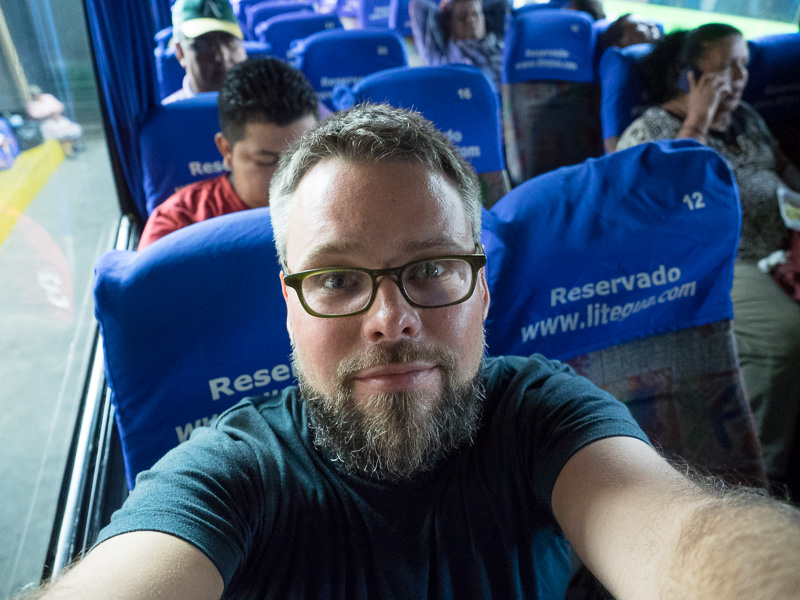
A real bus!
3:45 PM
We were now stuck in stop-and-go traffic, still watching the same horrible movie. By 4:00 PM, the DVD skipped so badly that we weren’t anymore. Nobody protested. This tragedy was followed up by some movie about a guy that grew up cutting lawns achieving his dream of playing professionally for Newcastle United and meanwhile honoring his dead father by kicking a goal. Or something. Who cares. We were back at a reasonable speed by 4:15 PM.
Rains hit us at 5:15 PM. By 6:00 PM the sun was gone. Oh boy – this would be a border crossing to Central America’s most dangerous country in the dark, likely alone. Or would I be forced to stay in El Florido on the Guatemala side? And if so, where would I stay? Nerves. A few.
6:45 PM
We began to pass through the city of Chiquimula. By this point my single sweater was no longer sufficient for the amount of icy air conditioning being pumped into the bus. Why was it ALWAYS like this in 1st class buses in developing countries?
Here in Chiquimula, I saw a McDonalds drive-thru with a line about 30 cars long. Even motorcycles were waiting – in the rain. What goes on? Also – an easy fix for long drive-thru line – GO INSIDE OF THE FAST FOOD RESTAURANT.
6:50 PM
We stopped at the small Litegua bus terminal in Chiquimula. All but about 10 passengers (myself as one of the ten) disembarked. Were these people crossing to Honduras as well? I guess the answer was possibly YES. Apparently I was supposed to change buses where we stopped. After (AFTER, AFTER, AFTER) we pulled away from the bus station, the ayudante (“helper” – the bus conductor) approached me to tell me about how a smaller bus had waited for me to change at that station. I had been completely unaware of this at the time, and began blaming my somewhat passable but imperfect Spanish language ability for why I had missed this connection. May. have. screwed. myself. Errr.
Another passenger on the bus started commenting about how he could help me find a hotel in some alternate town – probably Camotán, Guatemala – in other words, an option to quit what was becoming a difficult route to sleep instead of carrying on aimlessly in the dark. This vote of non-confidence just made me even more nervous about having missed my connection.
Yet through all this, nobody forced me off the bus. I wasn’t sure what to do and stared into space for a while. From all I could tell, I was just going have to take this bus to its terminus, at which point one of two things would happen:
- 80% estimated chance: I would be screwed and have to spend the night in some little Guatemalan town, in some dumpy little hotel – knowing that my expedited route had been a failure and that I should have just waited in Antigua for the tourist shuttle van to run again.
- 20% estimated chance: I would somehow still get to the Honduran border that night, come what may.
7:30 PM
My bus now arrived its terminus – likely in Camotán, Guatemala (though in my worried moment, I didn’t catch the name, in honesty). All remaining passengers disembarked, and I headed for the exit as well. As I stepped down, I told the bus driver I may have missed a critical connection, and asked if it was still possible to get to El Florido tonight. Yes. YES, he said, as he smiled and pointed to a “busito” (small bus) next to ours, headed for El Florido.
Similar shuttle vans are called all kinds of things in Mexico and Central America. Combi (cohm-bee), collectivo (coh-lek-tee-vo), shuttle (shuh-tuhl), micro (mee-crow), busito (boo-see-toh), among others.
I was for some reason the only passenger (alone again!), for some reason. We drove about 80 mph down slippery, curvy roads in the old passenger bus, which seemed to slide back and forth on its axles as we took corners. I smiled, happy to be headed the right direction again. COME WHAT MAY.
7:58 PM
Nearly hit a cow in the road. Oops.
8:02 PM
Arrived at the tiny town of El Florido, Guatemala. As I disembarked, both my bus driver and bus captain assured me that I should wait to cross the border until morning, because there were no more buses and no taxis on the Honduran side at that time of night.
I should get a room in El Florido, they said, and pointed me toward what they said was a “hotel” which was clearly just a family home with the lights on. I thanked them and walked toward the “hotel”. And yeah, maybe the family would have rented me a room, but I didn’t even want to ask. I had tried so hard all day just to get to Honduras, and I didn’t want to give up now.
I took a deep breath and started walking toward the Guatemala/Honduras border, which was about two minute straight-shot from where the bus dropped me. I’d check it out and then decide what to do.
8:08 PM
As I approached the traffic control gates at the border, an 18-wheeler driver, killing time before a big drive to Belize the next day, started speaking to me in good American English. His name was Darwin, a Honduran guy that had lived in Houston Texas for 12 years. He seemed actually trustworthy – not slimy like a tout or thief – and he asked me what had brought me to the border at that time of night. I told him my story and asked him if he knew about any onward transit options to Copán.
Darwin agreed with the bus guys – no, no buses nor taxis were on hand at this hour. But wait, he would check to see what else was out there. He phoned a Honduran mototaxi colleague in Copán, who asked if I was a local or a tourist, and quoted Q150 ($20 US) for the 10 km ride from the border to Copán accordingly – an extremely pricey opinion. “I hate that shit, it’s not right to charge more just because you’re not from here!” Darwin exclaimed. “We’ll find you something else.” We walked to Guatemalan immigration together while he thought it over.
I let him help me go through my immigration processing for both countries. Gut feeling said it was ok. I hoped I was right.
8:11 PM
The Guatemalan immigration window was still open, and I quickly stamped out at El Florido. The official asked me in Spanish “Do you plan to return to Guatemala?” I gave a sickly smile and told him no, as long as it was still actually possible to get to Copán tonight. No money exchanged hands here.
Darwin and I, joined by his long haul trucker buddy, also conveniently named Darwin, now walked together to the Honduran immigration office. The guys were relaxed, talking and laughing with one another.
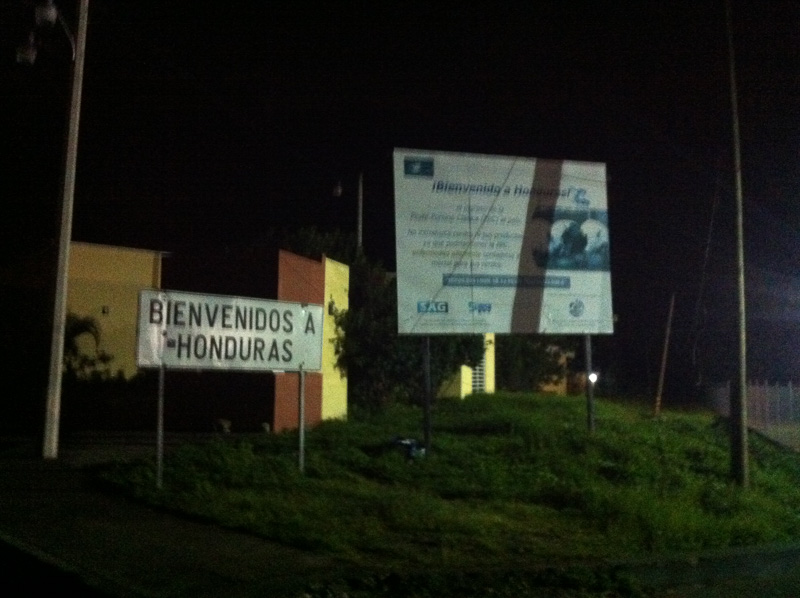
PROOF OF BORDER CROSSING.
8:25 PM
Upon arrival at the Honduran immigration office, most of the staff was lazily laying on the front steps of the building, which seemed too big for its present usage – processing one backpacker for entry to Honduras. During the day, it must be quite a busy place.
The entry cost was 30 Guatemalan Quetzales for me. I think it’s actually supposed to be $3.00 US (less than Q30) but I didn’t argue – and because I wanted to get rid of my remaining Guatemalan currency anyway.
Now I was stamped in to Honduras. But what if I needed to turn back to Guatemala for the night due to a lack of transport on the Honduran side? I didn’t want to think about it.
8:30 PM
Darwin, Darwin and I paced up a slight incline, into Honduras, after immigration. It seemed really dark, and darker still, and I couldn’t help but think how much trust I had placed in these guys, and how vulnerable I was at this stage. Still, they didn’t make me nervous, and I didn’t have a lot of other options at this stage.
On the Honduran side, there were definitely no buses, and no taxis of any sort either.
We plopped down on a makeshift wooden bench in the dark and the two truckers proceeded to smoke cigarettes and talk. Darwin told me stories of a DUI violation in Houston that landed him in prison and later got him deported back to Honduras. Our conversation was amicable and quite comfortable until he announced how much he didn’t like black people – not in Belize, not Houston, not in prison. And things were going so well between us, too! I grinned and bore it – this was no time to negotiate race-relations.
By this point professional transport from the border to Copán was more or less out of the question – we were just waiting for passing cars. My first ride in Honduras, the most dangerous country in the world – would be a “jalon“. Hitchhiking. Whee!
8:50 PM
An extended cab pickup truck pulled up. Darwin #1 stuck his thumb out. The truck stopped. Darwin ran to the driver’s window and quickly told them where I needed to go (which was fortunately more or less a straight shot on said freeway). I threw my pack in the bed, climbed in beside it, and a few trays of empty soda and beer bottles ready for return for deposit, and we rolled off. “Gracias chicos!” I shouted. They smiled and waved back.
I couldn’t help but remember some of Darwin’s advice to me before I departed from the border.
“This is my country, and I love my country, but you can’t trust NOBODY here.”
But yet, here I was, trusting him, and now trusting the driver of this pickup – with whom I exchanged a total of zero words, and whose face I never saw.
About fifteen minutes later, we pulled over at a modern gas station and it was time for me to jump out with my pack. “Está Copán, no?” I asked two women who were grilling meats on the side of the building. Yes, they replied, but you need a mototaxi to get to the center. Wait here. Ok. I bought a bag of chips and a Coke while I waited, which would be my dinner for the night.
Five minutes later, I had my mototaxi, but I had no local currency (Honduras uses the Lempira). Fortunately my mototaxi guy accepted Guatemalan Quetzales – 20 of them (around $3 US) – for my transit to the central square of Copán Ruinas. It took less than 10 minutes to get there.
It started to rain as I loaded out of the mototaxi. It kept raining as I walked in the incorrect direction of my chosen accommodations thanks to bad directions from my driver. Darwin’s words of “YOU CAN’T TRUST NOBODY” flashed through my head again. After walking a few blocks out of the way in the precipitation, I could no longer see through my glasses. But then there it was – Hostal Berekah. And they had one bed left in the dorm, for $6 US per night. I checked in, dropped my back and recomposed myself. I was done for the day – safely in Honduras despite the odds.
OK, SO YOU MADE IT TO COPÁN IN ONE PIECE, IN ONE DAY, LIKE A DUMB-DUMB. WAS IT WORTH IT?
NO. Crossing borders at night in developing countries (with no known available onward transit) is STUPID and potentially dangerous. I admit, I was lucky – I met honest, kind people that actually wanted to help me out, and did. You might meet the opposite type of person. I shouldn’t have done things like this and wouldn’t recommend you approach the El Florido border at night either unless you’ve somehow already worked out your onward transit from the border.
WELL THEN, WHAT’S THE RIGHT WAY TO GET FROM ANTIGUA TO COPÁN?
There are a number of better ways than I employed that you may want to look into:
Option #1: Book a tourist shuttle van from Antigua with pretty much any travel agency or hotel – again, it should cost you between Q150-200. If there’s not an available shuttle the day you’d like to travel, just book one for the NEXT DAY and wait it out. This is what I tried to do originally, and probably what I would do for any subsequent border Guatemala to Copan crossings.
Option #2: Bus company Hedman Alas runs regular routes to Copán from both Guatemala City and also from Antigua. This would probably be more comfortable than the tourist shuttles, as Hedman Alas runs full size passenger buses.
Option #3: The bus company I traveled with, Litegua, (tel: (502) 22208840 in Guatemala City) runs service to El Florido, but I believe it still arrives in the evening there (this was true at the time of writing anyway) and won’t get you any further than that. If this afternoon departure is your only option, just arrange transport from the Honduran side of the border via your Copán hotel or hostel, and you won’t have to hitchhike like I did.
Thanks for reading!

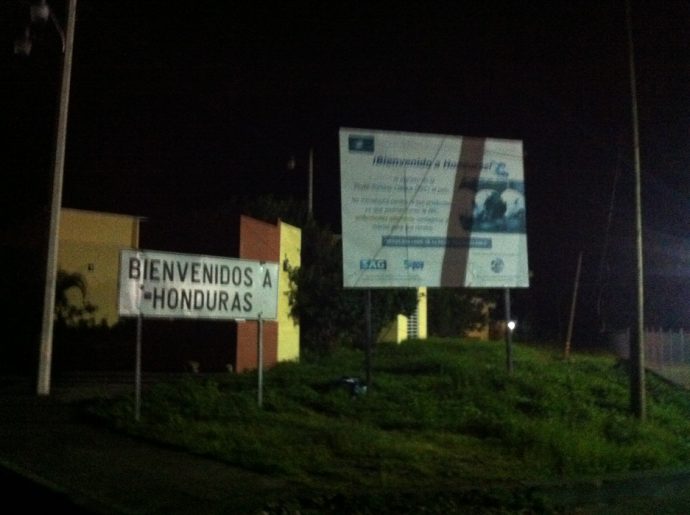
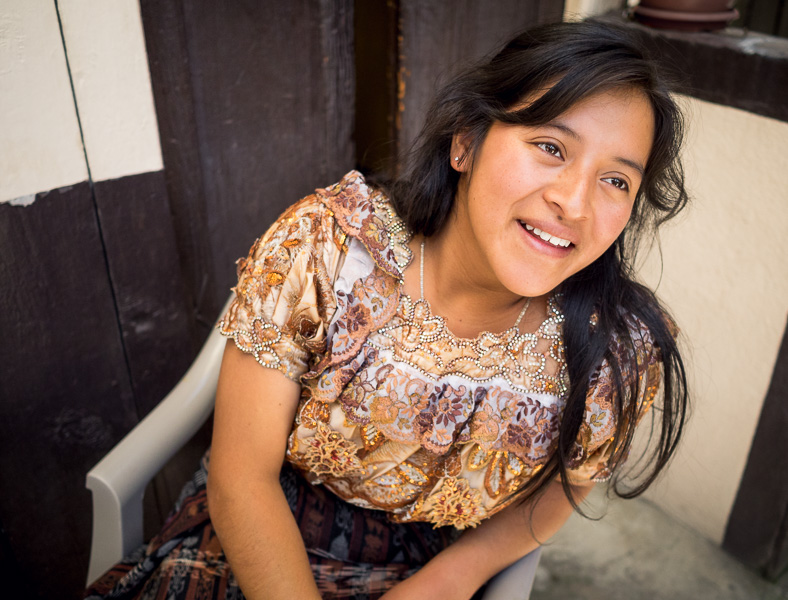

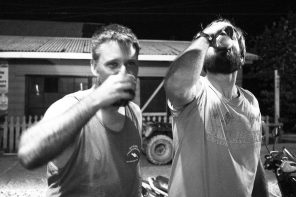
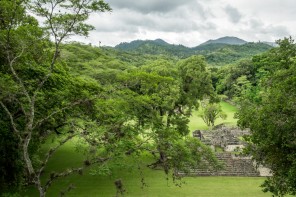
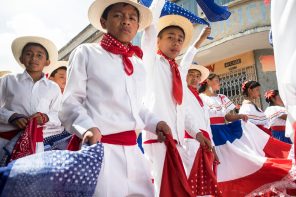

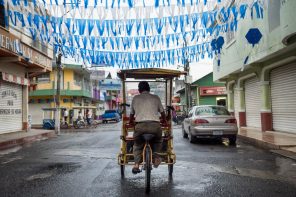
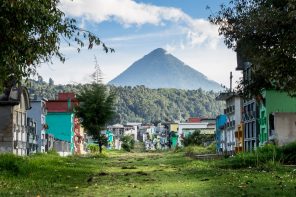
Good stuff. I will be doing the same route within a week or two 🙂
hhhola.
Does Honduras add another 90 day visa when coming from guatemala? We are near lago atitlan for 3 months, then 1.5 months in hondura,s then return to guatte to fly out. Can we just pay thee overstay fee (if it happens) when we fly out of guate, or would traveling between the two be difficult if it is not pre-extended. I’ve heard sometimes honduras considers itself non ca4, but i’m trying to find the most updated info.
No, you will not get a new 90-day CA-4 visa upon land crossings from Guatemala to Honduras. I didn’t. I would recommend renewing your CA-4 visa via a border run to Mexico from Lago Atitlan. You can head to Tapachula or San Cristobal de las Casas. Tapachula is closer, San Cristobal is prettier – your call. No reason to deal with overstay complications when Mexico’s as close as it is!
Matt, I’ve read a couple of your posts now having found them through researching Casa Seibel. Our family (of 5!) will be staying there for a month starting the end of November. Did you take your cat with you, or will my cat obsessed boys get to love on her? Also, any tips for staying in Xela? Thanks! Oh, and what a wonderfully artistic eye you have for capturing images behind the lens.
Hi Liney! Casa Seibel is fantastic – can’t recommend it enough. Oh – that’s the hostel cat, Lula, that lives at the hostel – so you’ll likely get to meet her (I just kind of considered her “mine” at the time I was there!).
Xela is a wonderful place to study Spanish, climb volcanoes/go trekking, and visit other attractions like Fuentes Georginas. Moreover, it’s just a great city to LIVE in for a while – the cost of living is affordable, people are pleasant/kind, and the town is easy to get around with public transport. Valeria at Casa Seibel will be happy to help you find whatever you’re looking for while you’re there – she’s awesome.
And thanks much for the kind words about my photography. It’s an important part of my trips!
Hey Matt was just googling on how to cross the border from Guatemala to Honduras and your post showed up. We will be doing the border crossing in a few days but from Panajachel. After reading your story I’ll definitely take the shuttle. Thanks for sharing.
Glad you got something out of this! I usually prefer public trans (like camionetas), but in this situation, shuttle vans are both cost-effective and time-effective. Thanks for reading.